Abstract
The extended phage-typing scheme described for Campylobacter jejuni and Campylobacter coli has established 46 different phage types using 19 typing phages. Altogether 754 campylobacter isolates, 672 C. jejuni and 82 C. coli, isolated from human and non-human sources received from 17 different countries were phage-typed. Overall, 80.6% of the total isolates were typable. Among typable strains, 9 phage types (3, 5, 10, 11, 18, 19, 23, 26 and 44) represented 57.0% of the strains, 21.3% of the strains belonged to another 37 phage types and the remaining 2.3% of isolates were designated atypical. The most common phage type 11 (140/754) was frequently observed among C. jejuni isolates from human (113/561) and non-human sources (18/111), whereas type 44 was frequent among C. coli isolates from human (22/59) and from non-human sources (8/23). A study of the animal host-associations of common phage types showed that contaminated cattle and poultry appear to be the most common sources of human infection. The greatest variety of phage types was observed in Canada (24 phage types), followed by Portugal (17 types) and the UK (14 types), reflecting the larger sample sizes from these countries. Phage type 11 was encountered in 12 different countries and prevalence of other phage types varied from one country to another. The number of isolates typable with the scheme varied from 93.2% (261/280) in Canada to 61% (47/77) in Thailand. However, the number and diversity of phage types makes phage typing the method of choice in epidemiological studies of campylobacter infections.
Full text
PDF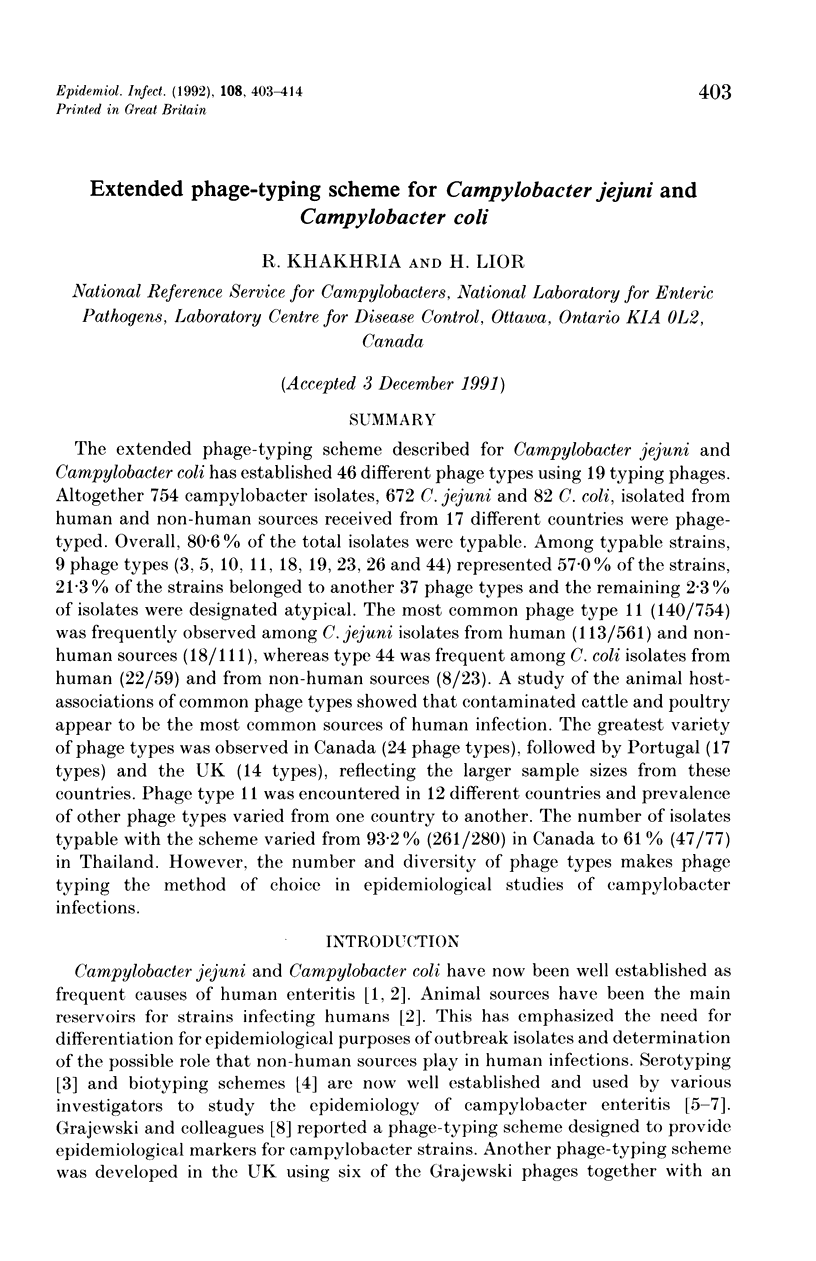
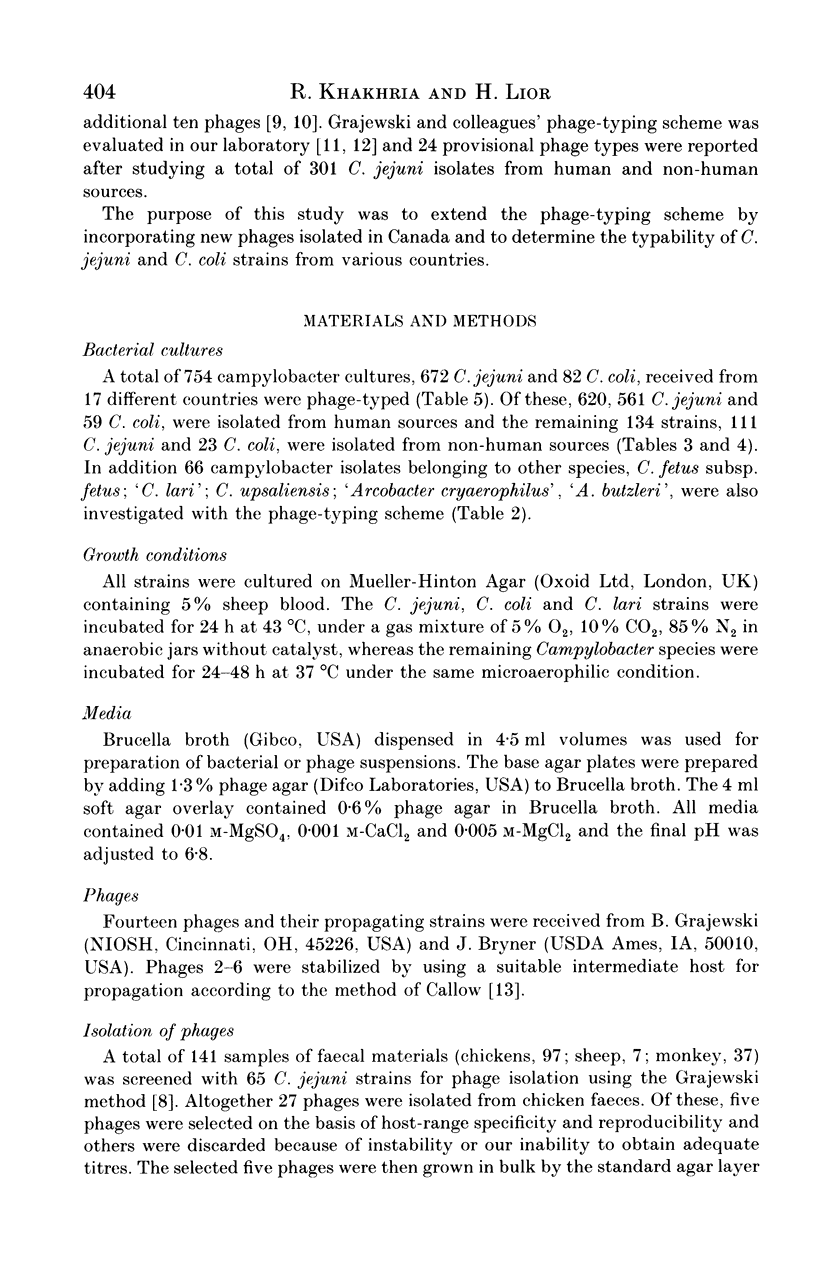
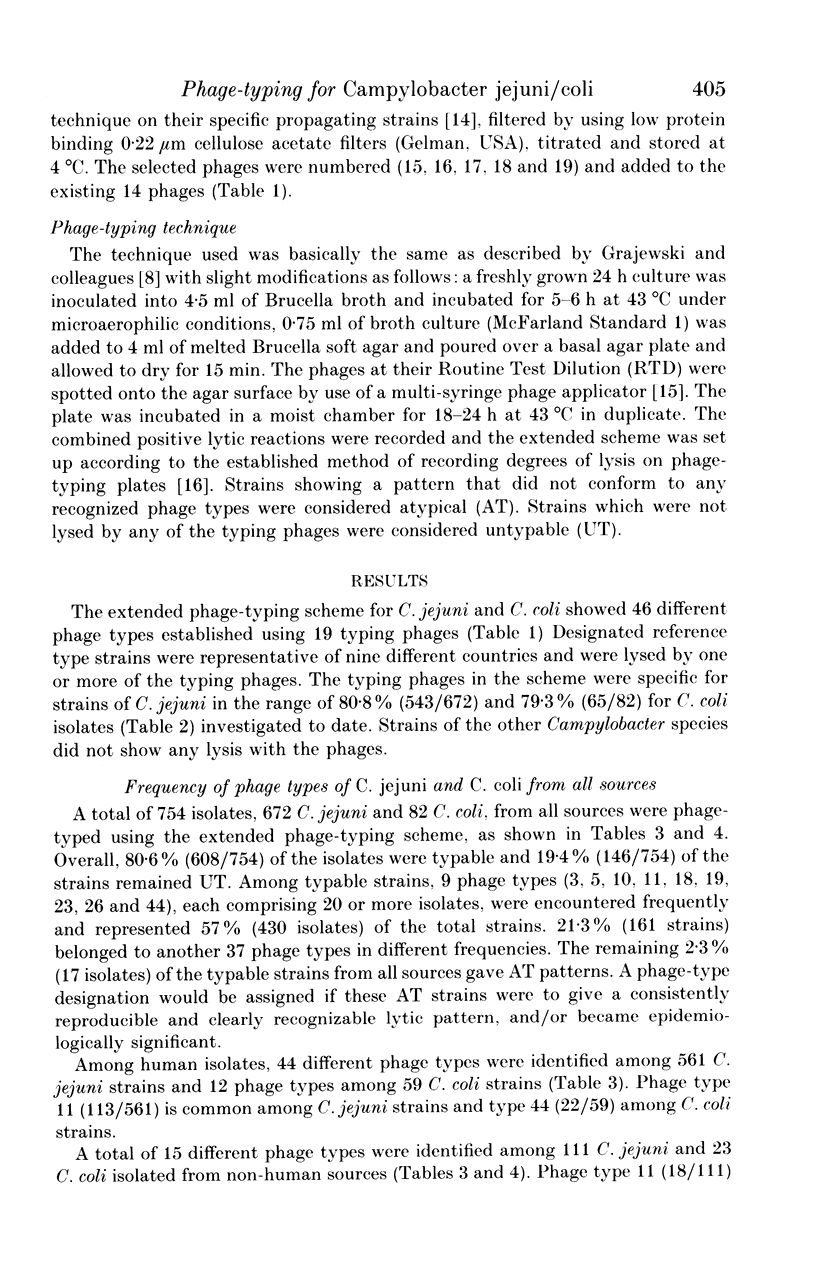
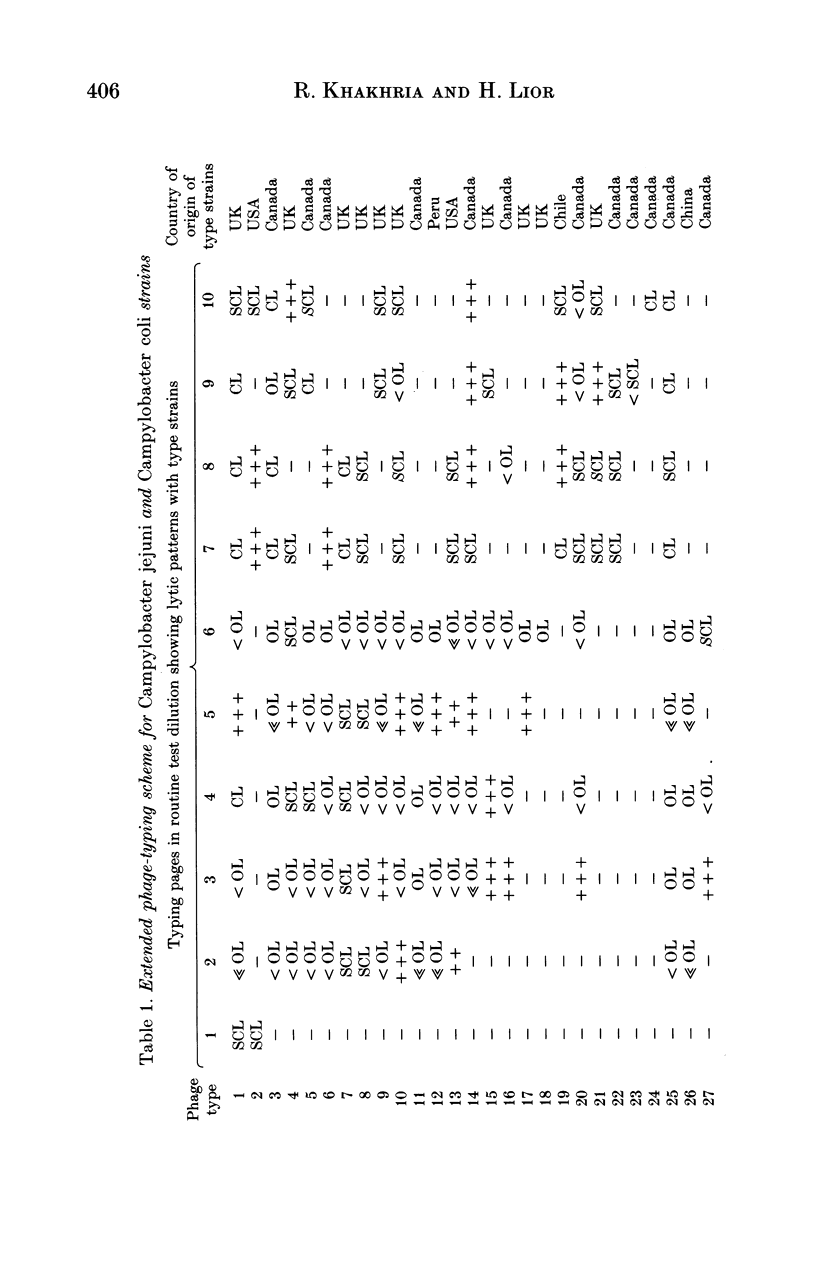
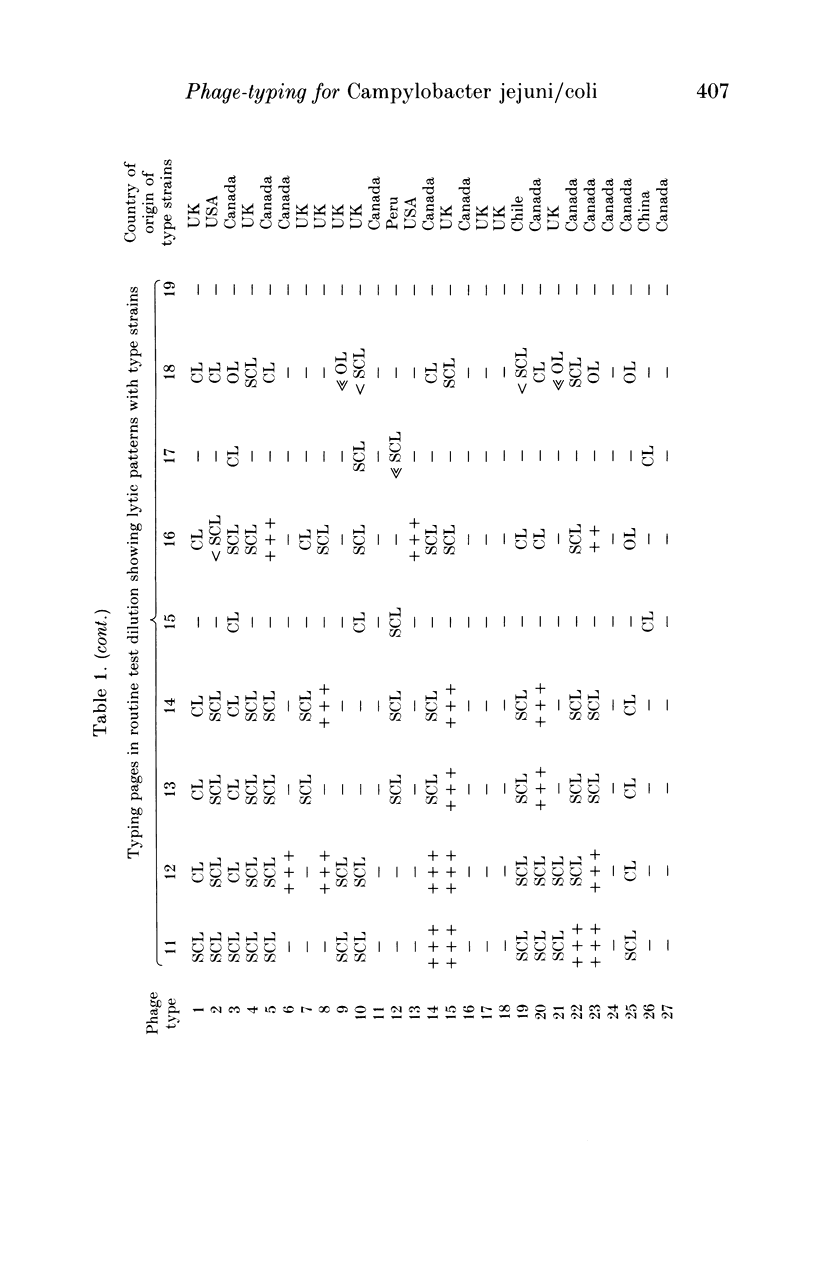
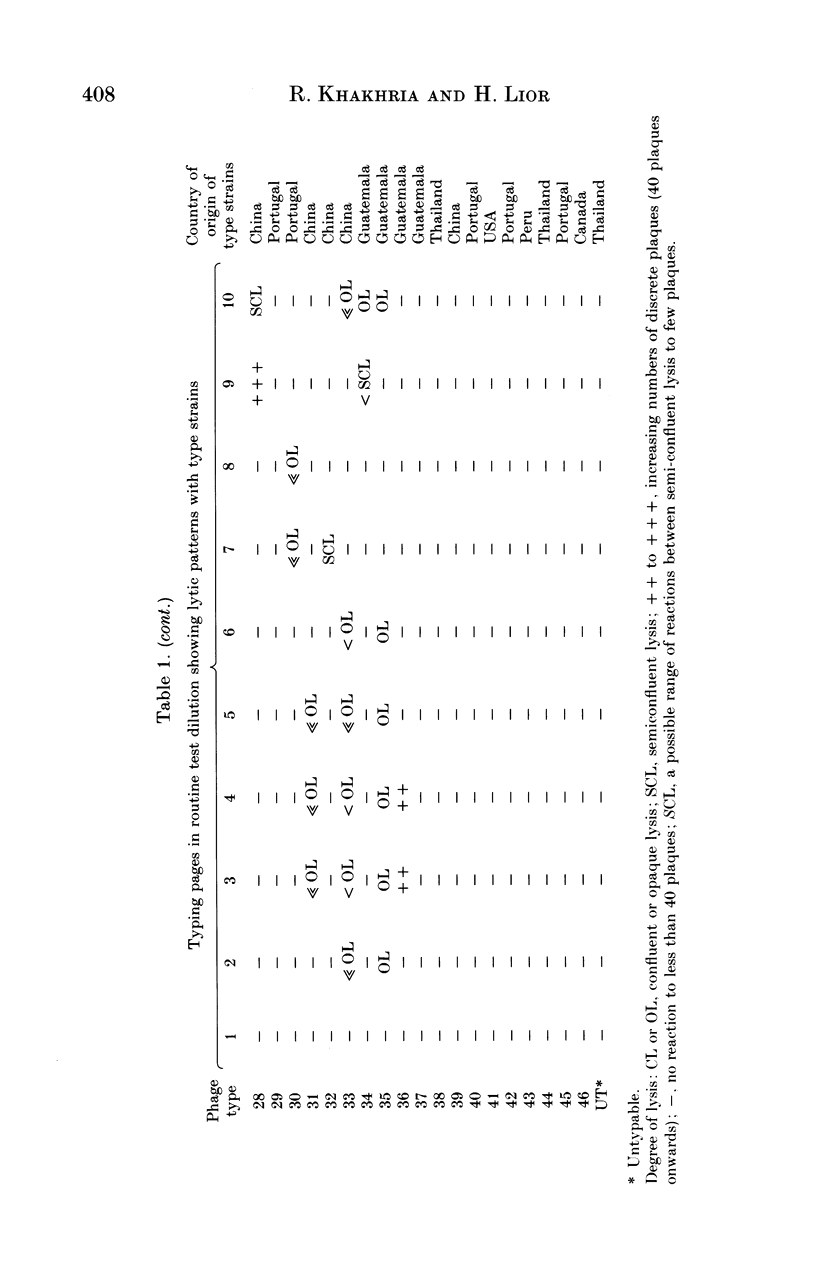
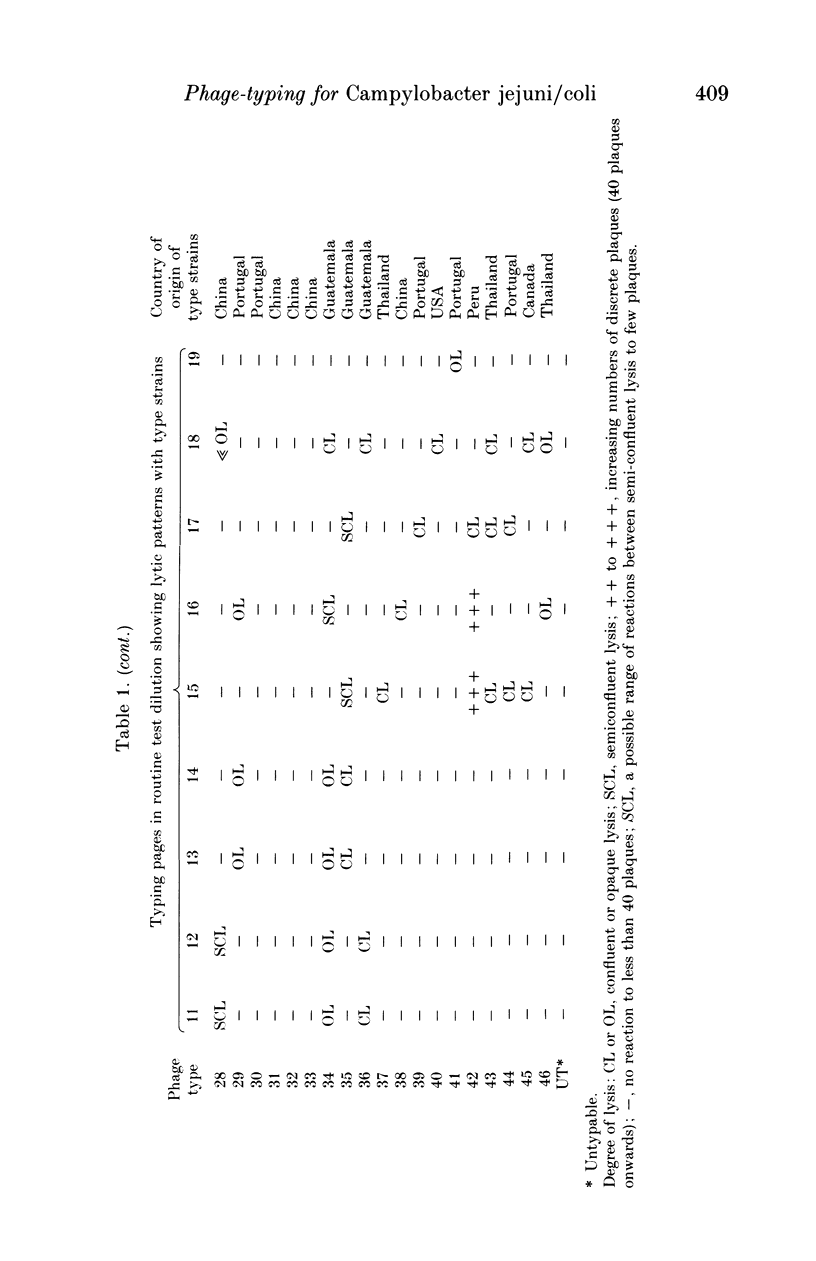
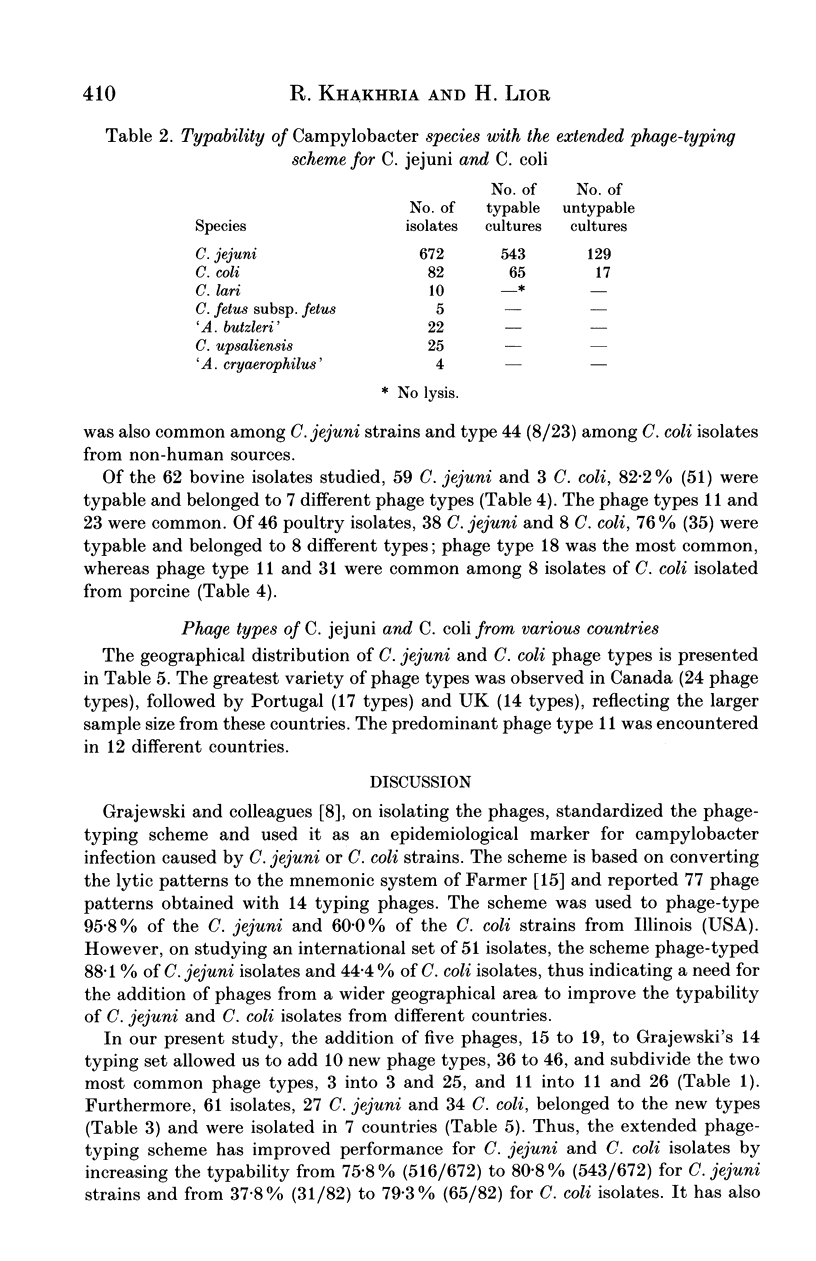
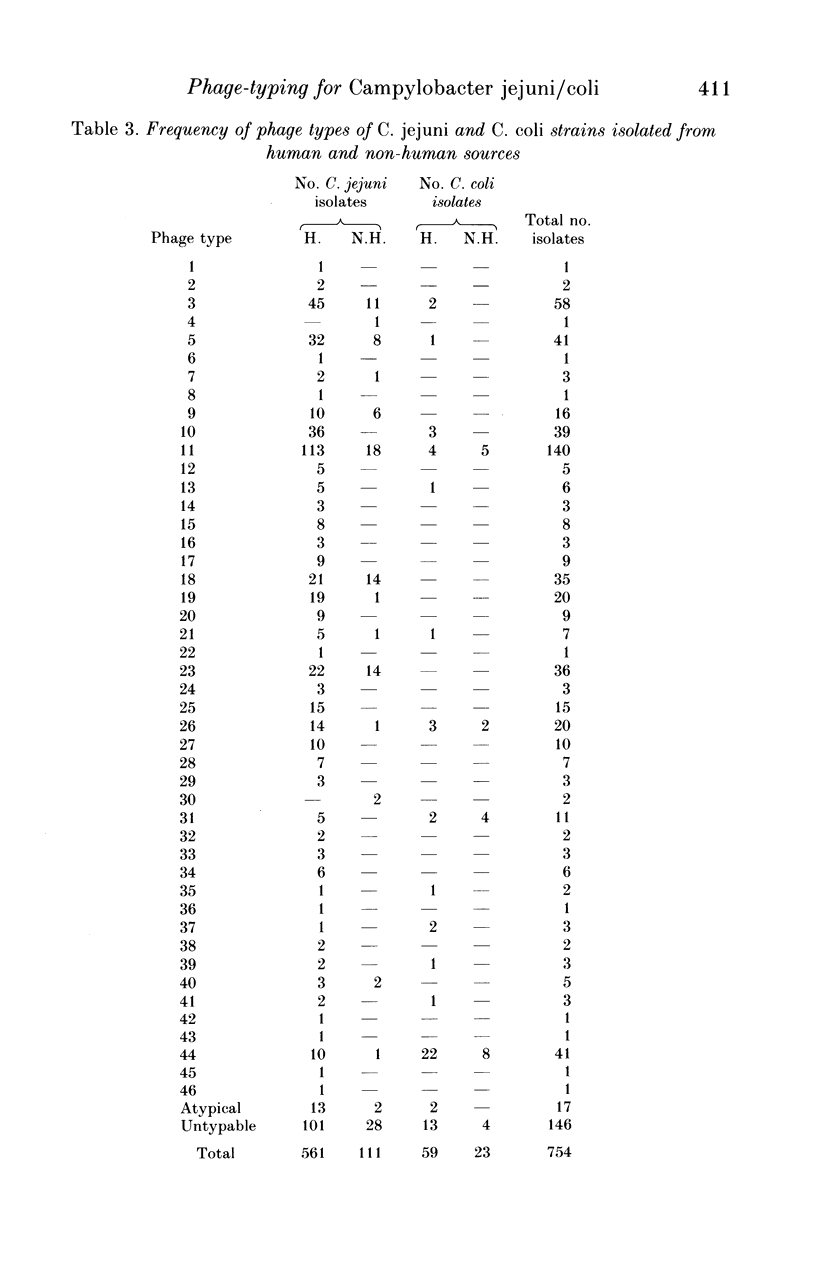
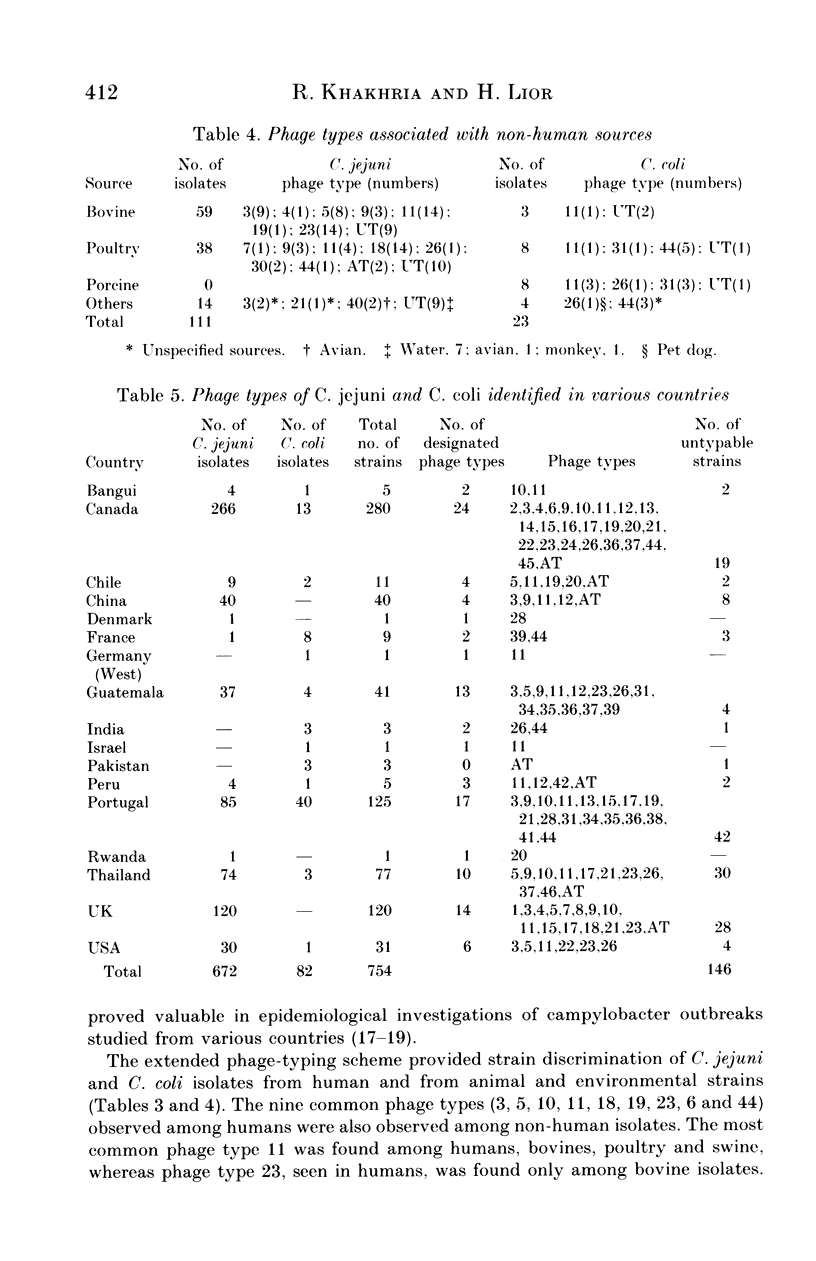
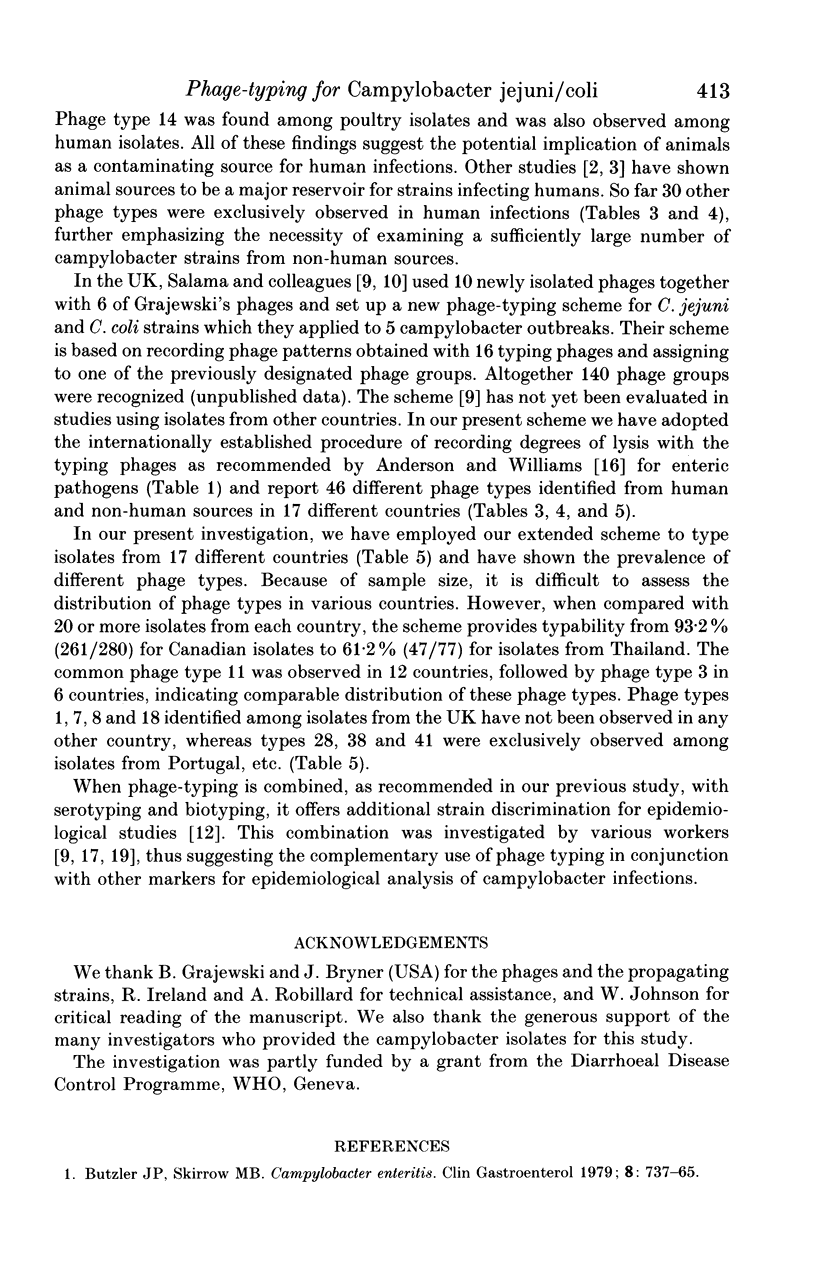
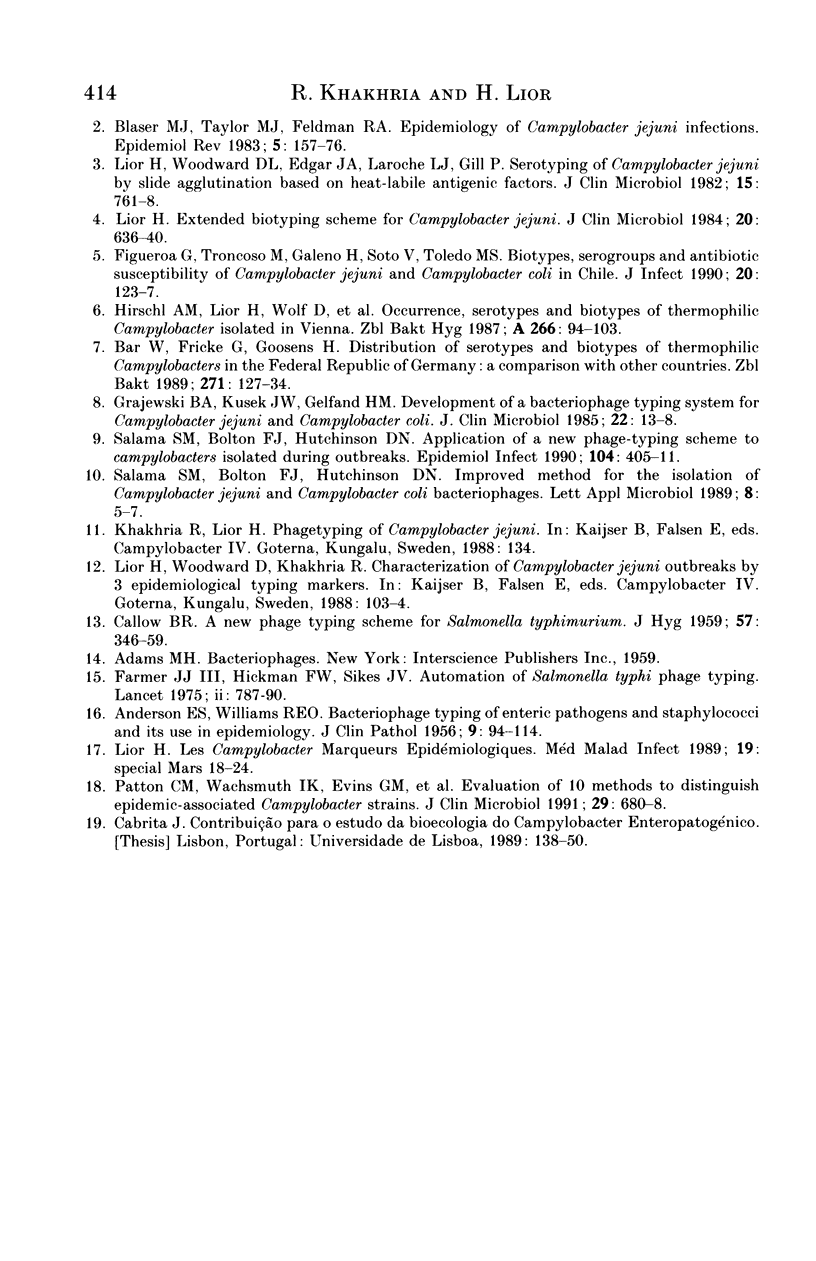
Selected References
These references are in PubMed. This may not be the complete list of references from this article.
- ANDERSON E. S., WILLIAMS R. E. Bacteriophage typing of enteric pathogens and staphylococci and its use in epidemiology. J Clin Pathol. 1956 May;9(2):94–127. doi: 10.1136/jcp.9.2.94. [DOI] [PMC free article] [PubMed] [Google Scholar]
- Blaser M. J., Taylor D. N., Feldman R. A. Epidemiology of Campylobacter jejuni infections. Epidemiol Rev. 1983;5:157–176. doi: 10.1093/oxfordjournals.epirev.a036256. [DOI] [PubMed] [Google Scholar]
- Butzler J. P., Skirrow M. B. Campylobacter enteritis. Clin Gastroenterol. 1979 Sep;8(3):737–765. [PubMed] [Google Scholar]
- Bär W., Fricke G., Goossens H. Distribution of serotypes and biotypes of thermophilic campylobacters in the Federal Republic of Germany: a comparison with other countries. Zentralbl Bakteriol. 1989 May;271(1):127–134. doi: 10.1016/s0934-8840(89)80061-1. [DOI] [PubMed] [Google Scholar]
- CALLOW B. R. A new phage-typing scheme for Salmonella typhi-murium. J Hyg (Lond) 1959 Sep;57:346–359. doi: 10.1017/s0022172400020209. [DOI] [PMC free article] [PubMed] [Google Scholar]
- Farmer J. J., 3rd, Hickman F. W., Sikes J. V. Automation of Salmonella typhi phage typing. Lancet. 1975 Oct 25;2(7939):787–790. doi: 10.1016/s0140-6736(75)80004-3. [DOI] [PubMed] [Google Scholar]
- Figueroa G., Troncoso M., Galeno H., Soto V., Toledo M. S. Biotypes, serogroups and antibiotic susceptibility of Campylobacter jejuni and Campylobacter coli in Chile. J Infect. 1990 Mar;20(2):123–127. doi: 10.1016/0163-4453(90)93314-i. [DOI] [PubMed] [Google Scholar]
- Grajewski B. A., Kusek J. W., Gelfand H. M. Development of a bacteriophage typing system for Campylobacter jejuni and Campylobacter coli. J Clin Microbiol. 1985 Jul;22(1):13–18. doi: 10.1128/jcm.22.1.13-18.1985. [DOI] [PMC free article] [PubMed] [Google Scholar]
- Hirschl A. M., Lior H., Wolf D., Stanek G., Rotter M. L., Wende L., Flamm H. Occurrence, serotypes and biotypes of thermophilic Campylobacters isolated in Vienna. Zentralbl Bakteriol Mikrobiol Hyg A. 1987 Aug;266(1-2):94–103. doi: 10.1016/s0176-6724(87)80023-8. [DOI] [PubMed] [Google Scholar]
- Lior H. New, extended biotyping scheme for Campylobacter jejuni, Campylobacter coli, and "Campylobacter laridis". J Clin Microbiol. 1984 Oct;20(4):636–640. doi: 10.1128/jcm.20.4.636-640.1984. [DOI] [PMC free article] [PubMed] [Google Scholar]
- Lior H., Woodward D. L., Edgar J. A., Laroche L. J., Gill P. Serotyping of Campylobacter jejuni by slide agglutination based on heat-labile antigenic factors. J Clin Microbiol. 1982 May;15(5):761–768. doi: 10.1128/jcm.15.5.761-768.1982. [DOI] [PMC free article] [PubMed] [Google Scholar]
- Patton C. M., Wachsmuth I. K., Evins G. M., Kiehlbauch J. A., Plikaytis B. D., Troup N., Tompkins L., Lior H. Evaluation of 10 methods to distinguish epidemic-associated Campylobacter strains. J Clin Microbiol. 1991 Apr;29(4):680–688. doi: 10.1128/jcm.29.4.680-688.1991. [DOI] [PMC free article] [PubMed] [Google Scholar]
- Salama S. M., Bolton F. J., Hutchinson D. N. Application of a new phagetyping scheme to campylobacters isolated during outbreaks. Epidemiol Infect. 1990 Jun;104(3):405–411. doi: 10.1017/s0950268800047427. [DOI] [PMC free article] [PubMed] [Google Scholar]


